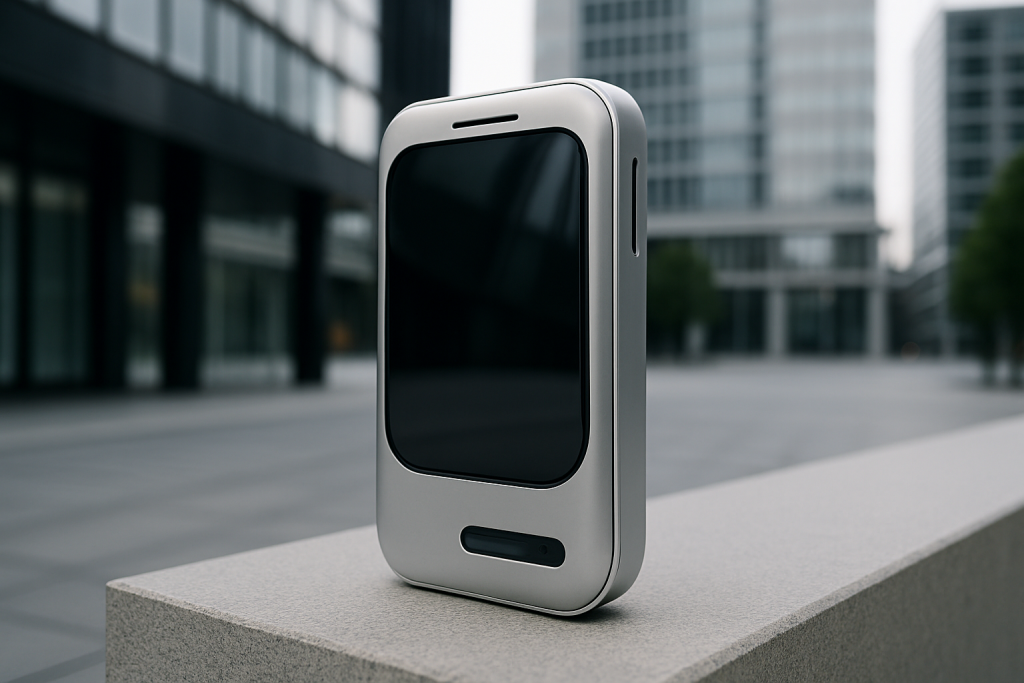Hold on to your hats, folks, because the AI landscape just tilted on its axis. Word on the street, or rather, the internet, is that OpenAI, the wizards behind GPT-3, GPT-4, and that chatbot you’re probably a little too attached to, is diving headfirst into the hardware game. And they’re not just dipping a toe in; they’re cannonballing in with none other than Jony Ive, the design demigod responsible for the sleek lines of everything from the iMac to the iPhone, at their side.
Yes, you read that right. OpenAI, the software powerhouse, is reportedly building its very own consumer hardware device. Think of it as Tony Stark deciding to build his own suit, but instead of palladium, we’re talking silicon and algorithms. This isn’t some minor upgrade; it’s a full-blown strategic shift, a declaration that OpenAI isn’t content just living in the cloud. They want to be in your pocket, on your wrist, maybe even… integrated into your life in ways we haven’t fully imagined yet.
The rumor mill is churning, and the details are still shrouded in secrecy thicker than a London fog, but sources are whispering about a gadget, a sleek, impossibly elegant gizmo that screams Jony Ive’s design DNA. Remember that minimalist aesthetic that defined Apple for decades? Expect something similar. Something that makes you want to stroke it lovingly and whisper sweet nothings about industrial design. Specifics are scarce, but the buzz suggests AI-centric wearables designed to play nice with OpenAI’s ChatGPT ecosystem. Imagine a device that anticipates your needs, answers your questions before you even ask them, and maybe even writes your emails for you. Is that the future, or just an episode of Black Mirror waiting to happen?
So, how did we get here? To understand the significance of this move, we need a little history. OpenAI, founded back in 2015, quickly became the poster child for AI innovation, churning out groundbreaking models that pushed the boundaries of what was thought possible. But software alone can only go so far. The real magic happens when software and hardware work together in perfect harmony. That’s where Jony Ive comes in.
In May 2025, OpenAI made a move that raised eyebrows across the tech world: they acquired io, Jony Ive’s new venture, for a cool $6.5 billion. That’s not pocket change; that’s “we’re serious about this hardware thing” money. Ive, the man who shaped Apple’s design philosophy for decades, bringing his talents to OpenAI? It’s like Batman joining forces with the Justice League. The potential is staggering.
This isn’t just about building a pretty gadget; it’s about control. OpenAI wants to own the entire user experience, from the algorithms that power the AI to the device you hold in your hand. Think of it like this: right now, OpenAI’s AI is like a talented musician playing on someone else’s instrument. By creating their own hardware, they’re building their own Stradivarius, perfectly tuned to their specific needs. This allows for a level of integration and optimization that simply isn’t possible when relying on third-party devices.
The implications for the tech industry are huge. Suddenly, OpenAI isn’t just a software company; it’s a hardware player, a direct competitor to the Apples, Googles, and Samsungs of the world. This throws a wrench into the established order, forcing these tech giants to rethink their strategies. Will they respond by doubling down on their own AI efforts? Will they try to acquire smaller hardware companies to bolster their offerings? The battle for AI dominance is about to get a whole lot more interesting. It’s like the streaming wars, but with more robots.
But beyond the competitive landscape, there are deeper questions at play. What does it mean for AI to become so intimately integrated into our lives? Will we become overly reliant on these devices, outsourcing our thinking and decision-making to algorithms? Will this lead to a world where our every move is tracked and analyzed, where privacy becomes a distant memory? These are the ethical considerations that we need to grapple with as AI continues to evolve.
And let’s not forget the financial implications. OpenAI’s move into hardware could be a massive revenue generator, allowing them to further invest in AI research and development. But it also carries significant risk. Building and scaling a hardware business is a notoriously difficult undertaking, requiring expertise in manufacturing, supply chain management, and marketing. Can OpenAI successfully navigate these challenges? Only time will tell.
Ultimately, OpenAI’s foray into hardware is a bold move, a gamble that could reshape the future of AI. Whether it’s a brilliant stroke of genius or a cautionary tale remains to be seen. But one thing is for sure: the world is watching, waiting to see what Jony Ive and the OpenAI team conjure up next. And whatever it is, you can bet it’ll be pretty darn buzzworthy.
Discover more from Just Buzz
Subscribe to get the latest posts sent to your email.


